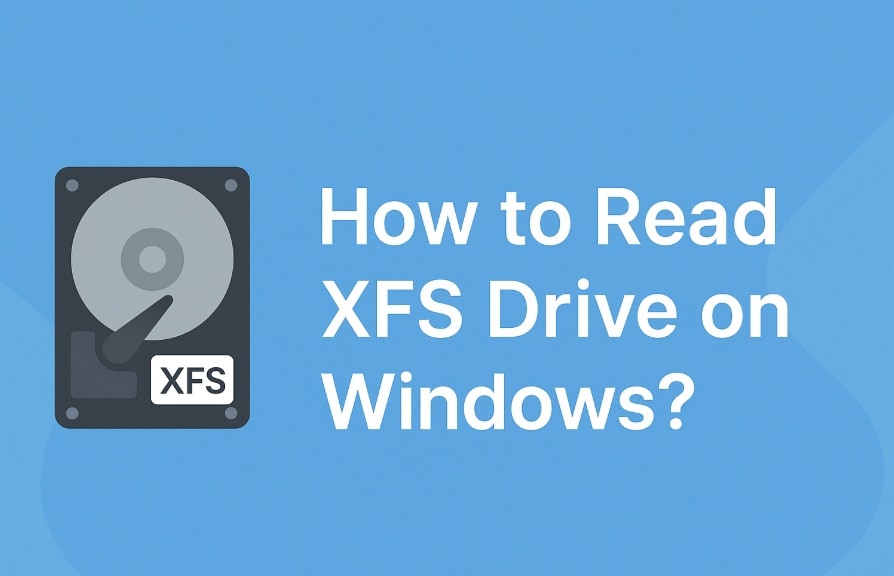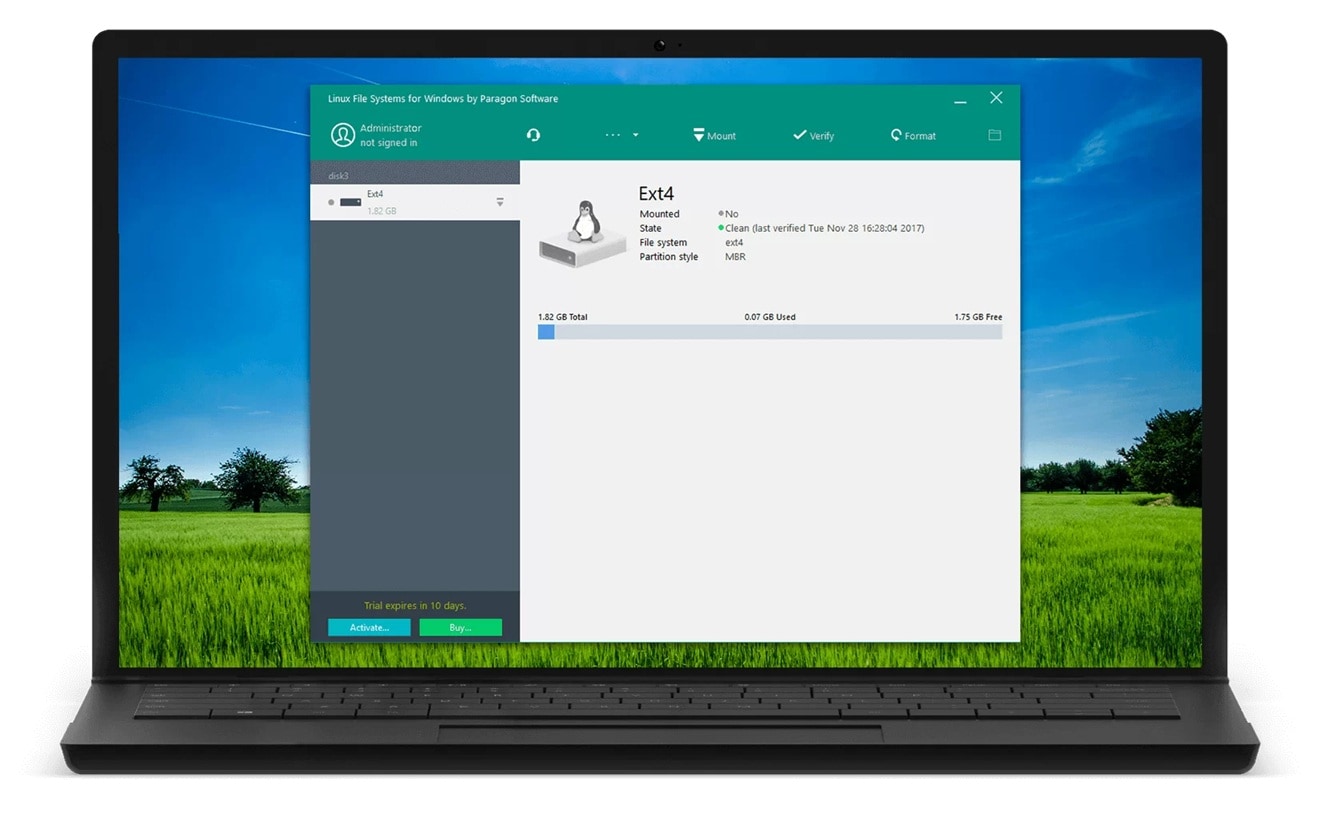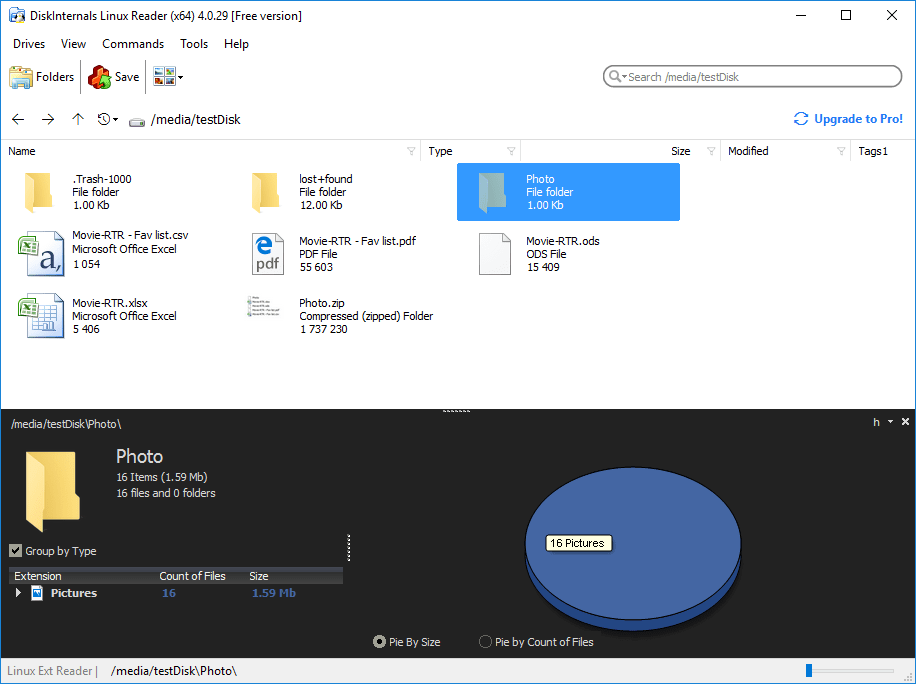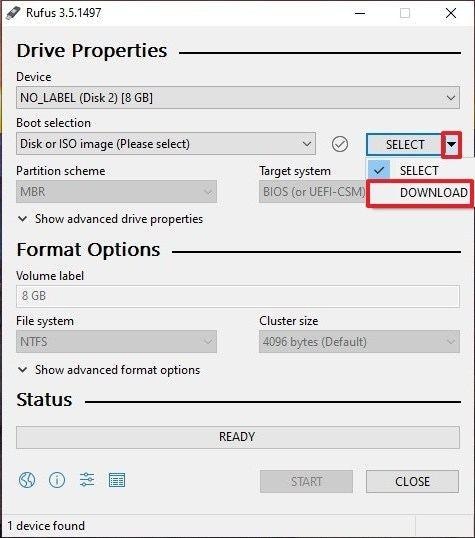
Connecting an XFS drive to Windows often leads to confusion, as the system cannot open it. Windows may suggest formatting or show unclear errors because it does not support the XFS file system. As a result, users search for solutions and try methods that fail. This guide clears up the issue by explaining the problem and showing safe, reliable ways to access the drive.
XFS is widely used on Linux systems, NAS devices, servers, and heavy‑duty storage units. While Windows cannot read XFS directly, you can still access the data using specialized tools, virtual machines, or Linux‑based methods.
This guide also covers recovering deleted files and introduces software that allows safe access to XFS drives from Windows.
Try Recoverit to Recover & Repair Video/Photo/Docs etc.
Security Verified. Over 7,302,189 people have downloaded it.
Table of Contents
Part 1: Why You May Need to Read an XFS Drive on Windows
You may need access to an XFS drive on a Windows system for many practical reasons. These situations happen at home, in offices, in labs, or in server rooms. Knowing why access is needed helps you choose the right method. It also helps you avoid losing files.
Drive from a Linux machine
Many Linux systems use the XFS format because it is fast and stable. When users bring this drive to a Windows PC, nothing opens. This is one of the most common reasons people search how to read XFS drive on Windows.
Drive from a NAS device
NAS brands often use XFS because it deals well with large data sets. When someone removes a drive from a NAS and plugs it into a Windows system, the files do not appear. This leads people to search for XFS Windows solutions.
Work with large file systems
XFS handles large files better than many formats. This is why professionals store heavy data on it. But when they need these files on another computer, they see that can Windows read XFS drives naturally has a simple answer: no.
Move data between systems
People copy data between Linux and Windows systems. When the drive is in XFS, the Windows side fails to open it. Many users then search how to open XFS drive on Windows.
Fix damaged partitions
Sometimes the drive has errors. Windows cannot read the partition. People then try repair tools that fail. In such cases, they need methods that work well with the XFS file system Windows setup.
Restore old project data
Companies store old project files on XFS drives from servers or labs. When people try to open them on Windows years later, they cannot. This leads them to look for how to read XFS drive options.
Review backup files
Many backup tools store data on XFS. Users who want to check these backups on Windows cannot open the drive.
Open RAID storage
Some RAID systems use XFS. Windows cannot read it, so users must rely on the best tools for reading XFS drives on Windows.
Part 2: How to Read XFS Drive on Windows: Simple Methods Explained.
This part explains the main ways to open an XFS drive on a Windows PC. Each method has benefits. Choose the one that fits your situation. Each method works even when Windows cannot open the drive at all.
Method 1: Use third-party XFS file system drivers for Windows
This method allows Windows to read an XFS drive through a driver. It acts like a bridge. It lets you open the drive as if Windows understands it.
Many people use this when they need fast access. It works well for people who want how to read XFS drive on Windows without extra systems or Linux. It is also helpful when you want basic access without using virtual machines.
Steps
Step 1: Install an XFS driver that supports Windows systems. Use the Linux File Systems for Windows by Paragon Software.

Step 2: Connect the drive. Wait for the driver to detect it and then open the files.
Method 2: Install Linux Reader software to access XFS partitions
Linux Reader is a tool that can open Linux file systems in a read-only mode. This is safe. It protects the drive from changes. Many users prefer this method because it is simple. It is a common method when someone wants how to open XFS drive on Windows without installing a full Linux system.
Steps
Step 1: Download and install Linux Reader, like DiskInternals.

Step 2: Open the software, select the XFS drive, and export the files you need.
Method 3: Use virtualization (VMware or VirtualBox) with Linux OS to mount XFS drives
This method gives you a full Linux environment inside your Windows computer. This helps when you need more control. It also helps when you work with servers, backups, or RAID systems. Many people use this option when they want deep access with stable tools. It also works well with the best tools for reading XFS drives on Windows when advanced tasks are needed.
Steps
Step 1: Install VMware or VirtualBox on your Windows PC.

Step 2: Install a Linux OS inside the virtual machine and mount the XFS drive.
Method 4: Boot a Windows PC with a Linux Live USB to access XFS files
This method runs Linux directly from a USB flash drive. Nothing installs on your computer. This is one of the simplest ways to get direct access to the drive. It also works well when the Windows system is unable to detect the drive at all. Many people use it for quick access when they want how to read XFS drive solutions without installing new software.
Steps
Step 1: Create a Linux Live USB using a tool like Rufus.

Step 2: Boot your PC from the USB and open the XFS drive from the Linux desktop.
Part 3: How to Recover Data from an XFS Drive on Windows? Use Recoverit Data Recovery Tool
Users lose files on XFS drives due to errors, formatting, system damage, or accidental deletion. Windows cannot help because it cannot read the format. This is where recovery software is needed. Recoverit is one of the easiest tools for this job. It works well for people who need to recover deleted files from XFS drives on Windows. It detects partitions, scans them deeply, and shows files that Windows could never find on its own.
Recoverit helps people who have tried all access methods but still cannot open the drive. It also helps people who have damaged partitions or missing folders. Many people use it because they do not know can Windows read XFS drives naturally and assume recovery is not possible. But Recoverit makes it simple. It works well with XFS Windows setups and helps people rescue files that matter.
Why use Recoverit
- Supports XFS partitions
- Easy to use for all users
- Deep scan for heavy data loss
- Works even on damaged drives
- Safe for recovery
- Shows files before saving them
Recovery steps
Step 1: Install the Recoverit software on Windows. Connect the XFS drive. The tool will display all drives it detects.

Step 2: Choose the XFS drive from the list. Start the scan. Wait for the tool to find your files.

Step 3: Preview the files. Select the ones you want to restore. Save them to another safe location.

Part 4: Pro Tips for Handling XFS Drives on Windows
Handling an XFS drive on a Windows system requires care. These tips help keep your files safe. They also reduce the chance of corruption and protect your storage from mistakes. Follow them whenever you use XFS drives.
Use safe removal when unplugging the drive: Always eject the drive properly to prevent data corruption or incomplete writes.
Avoid formatting the drive when Windows asks: Formatting erases everything, so ignore the prompt and use proper tools to access the data.
Keep backups of important files: Store copies on another drive or cloud service to protect against accidental loss.
Check drive health often: Use disk utilities to monitor for errors or bad sectors before they cause bigger problems.
Prefer read-only tools when possible: These let you view and copy files without risking accidental changes or damage.
Scan your system for malware: A clean system ensures safe transfers and prevents infections from spreading to your external drive.
Use good cables during transfers: Faulty or low-quality cables can interrupt data flow and damage files.
Keep some free space on the drive: Drives need extra room for smooth operation and to avoid performance issues.
Conclusion
Reading an XFS drive on a Windows system is not simple. Windows cannot open the format. But you can still access the drive using tools or Linux systems. This guide explained how to read XFS drive on Windows using four reliable methods. These methods work for beginners, home users, and professionals who need stable access.
This guide also explained how to recover deleted files from XFS drives on Windows using Recoverit. This tool helps when nothing else works. Follow the steps and protect your files. With the right tools and tips, you can handle XFS drives with confidence.
FAQs
-
1. Can Windows open an XFS drive directly?
No. Windows cannot open or read an XFS drive by itself. You must use a tool, virtual system, or Linux. -
2. Is XFS better than NTFS?
XFS is good for large files and heavy workloads. NTFS is better for Windows systems. Both are strong in different uses. -
3. Can I recover deleted files from an XFS drive on Windows?
Yes. You can use a tool like Recoverit. It works well with XFS and restores files even when Windows cannot read the drive.


 ChatGPT
ChatGPT
 Perplexity
Perplexity
 Google AI Mode
Google AI Mode
 Grok
Grok























